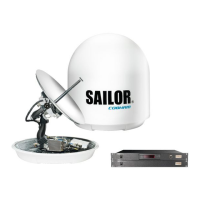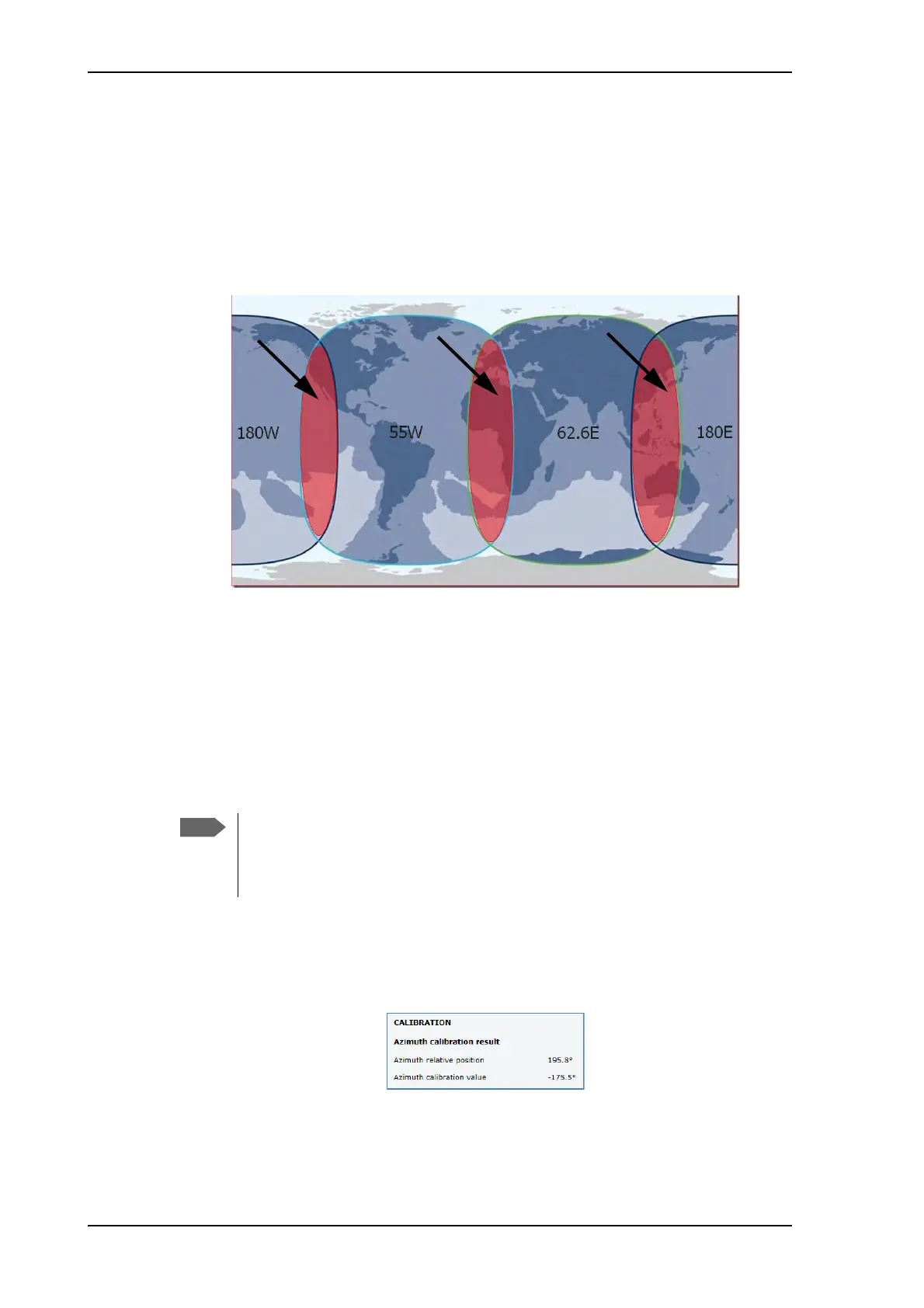Frequently asked questions
8-28 Chapter 8: Service 98-141779-G
8.8.2.19 Q19: After successful azimuth calibration the antenna is still pointing in a
wrong direction, what is wrong?
You have made a successful azimuth calibration, but the antenna status stays in the status
ACQUISITION. The reason for this may be that the antenna has found another GX
satellite than the one you intended it to use for the azimuth calibration. This is the case if
you make the azimuth calibration when in an area that is covered by two satellites, see the
following figure.
Example: Calibration in a European harbor (within the red area). There are two GX
satellites on the same elevation: 62.6E and 55W.
The SAILOR GX cannot tell the difference between the GSC signal sent by the GX satellite
on 62.6E and the GSC signal sent by the GX satellite on 55W (Same frequency and same
Global Signalling Channel). In rare cases the SAILOR GX might find the 'opposite' satellite
during the azimuth calibration. As a consequence, the azimuth calibration value will be
wrong. The azimuth calibration value is the relation between vessel heading and the
antenna zero point. This causes the antenna to miss point when put into normal operation.
8.8.2.20 Action
Check the azimuth calibration value against the position of the service hatch of the
antenna.
Figure 8-25: GX satellites with overlapping areas
The azimuth calibration will show successful even if the opposite satellite is found.
And if the modem uses the same satellite as used for azimuth calibration, a
successful connection will be established. But when a change to a new satellite is
needed the SAILOR GX will point in the wrong direction.
Figure 8-26: Check of azimuth calibration value

